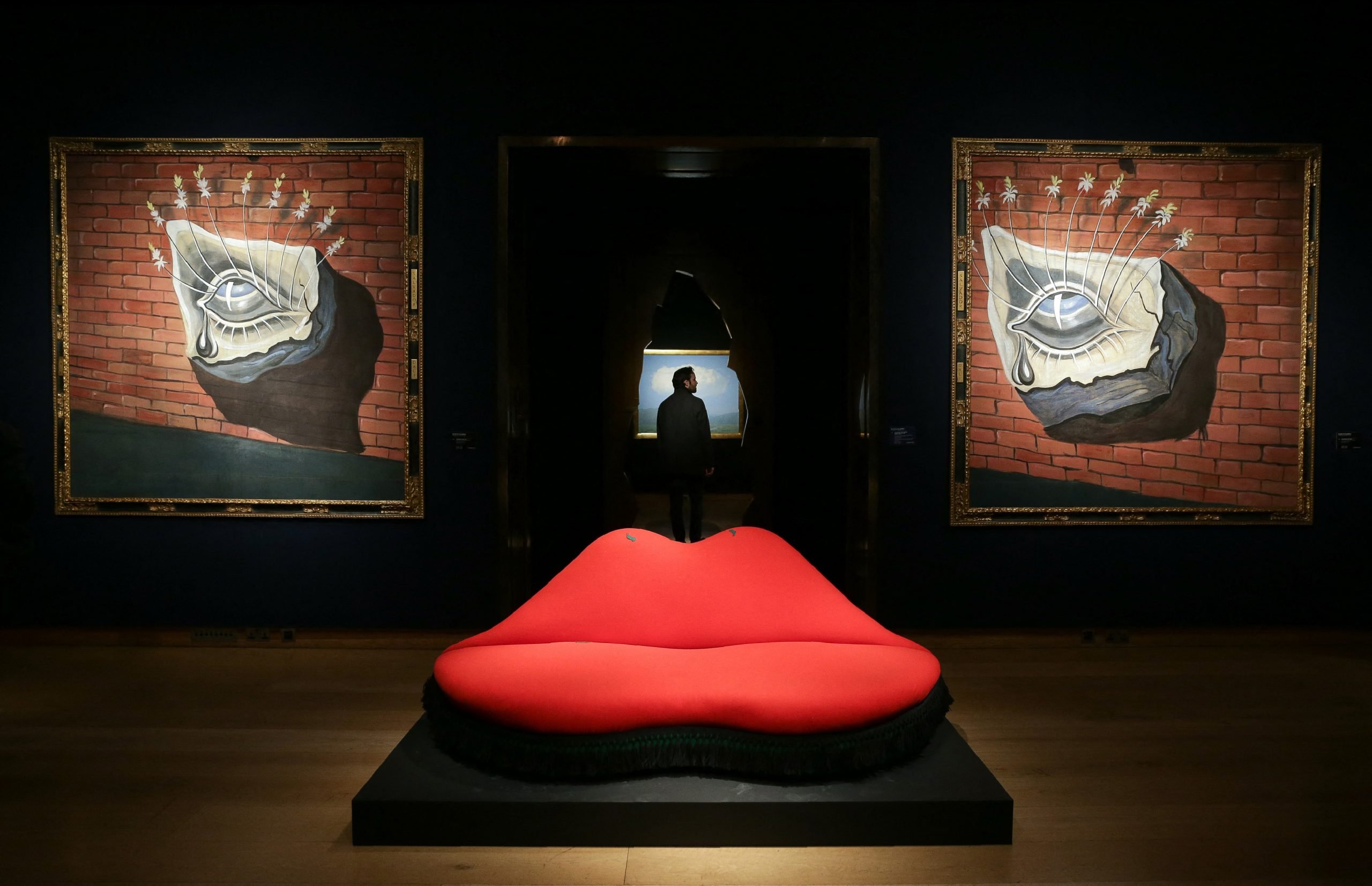
The bucolic county of West Sussex, on England’s South Coast, may seem an unlikely place to track down fine examples of Surrealism, but tucked away among its rolling hills is a reimagined hunting lodge that stands as a landmark to the early 20th-century artistic movement devoted to absurdism and dreamlike imagery. It’s called Monkton House, and in the mid-1930s its owner, Edward James, transformed the property in the village of West Dean into a Surrealist spectacle.
Born to an aristocratic mother and a tycoon father, James had inherited two vast fortunes by the age of 25 and, as a poet and aesthete, pumped his wealth into the arts. “Money seems to have been given to me to spend,” James wrote, “and I felt I could alter the face of the world by fostering any and all creative spirit.”
The exterior of Monkton House, part of the West Dean Estate. Photo: Tony Evans/Getty Images.
James followed through on such lofty instincts, falling first into the world of ballet, commissioning works by Pyotr Ilyich Tchaikovsky and Bertolt Brecht, and later into art, where the Surrealists, in particular, tickled his eccentric sensibilities.
This was largely the work of Salvador Dalí, who was on a mission to promote Surrealism—and, by extension, himself—and was in need of a benefactor. The two had met in 1934, and soon James was funding Surrealist publications and a grand London exhibition at which Dalí sermonized from inside a copper and canvas diving suit. By 1938, James was buying up Dalí’s entire artistic production.
The Mae West Lips Sofa by Salvador Dalí, in Monkton House. Photo: Tony Evans/Getty Images.
James’ greatest contribution to Surrealism, however, was collaborative in nature. In the process of converting his staid country estate into something uniquely modern, James brought together Victorian, Edwardian, and Surrealist aesthetics. Monkton’s exterior was painted lilac and green, and its roof was fitted with coffin-shaped chimneys and a clock that told not the time but the days of the week. Inside, James turned Dalí’s works of art into Surrealist furnishings.
Portrait of Mae West, the movie star who inspired Dali. (Photo by GAB Archive/Redferns)
Most notable were the sofas created out of Dalí’s collage Mae West’s Face which May be Used as a Surrealist Apartment (1934–35), which conjured an entire room formed of the celebrity’s facial features. Dalí saw the Hollywood icon as the ultimate sex symbol, and for good reason: aside from West’s looks and pithy one-liners, the actor prodded the era’s Puritanical code by starring in subversive plays—in 1927 she was even charged with obscenity and briefly jailed. Today, West might be characterized as “sex positive,” but in the 1930s, she was called a “corruption of youth morality.”
Salvador Dali sitting on his Mae West sofa. Photo: AFP via Getty Images.
Dalí’s collage was intended as a draft for the apartment of fashion designer Elsa Schiaparelli, but when James saw it he proposed morphing West’s mouth into a sofa. In the archives at West Dean, there’s an envelope scribbled with sketches of the sofa by Edward Carrick, a designer who collaborated closely with James. This suggests James’ role was more than merely financial backer. In total, James produced five versions of the sofa, each differently covered. He labeled the bright pink version that matched the Schiaparelli collage “too flashy.”
His preferred version was upholstered in red satin and fringed with black tassels designed to emulate bullfighters’ epaulettes. A trio of green squiggles, suggestive of caterpillar larvae, was sewn into its upper lip. They rested on either side of the fireplace in a room within easy reach of another famed James-Dalí collaboration: the lobster telephone.
What’s the deal with Leonardo’s harpsichord-viola? Why were Impressionists obsessed with the color purple? Art Bites brings you a surprising fact, lesser-known anecdote, or curious event from art history.